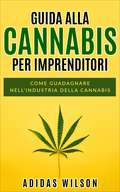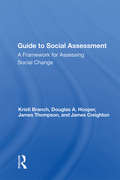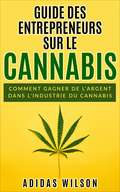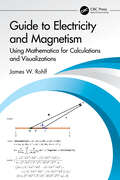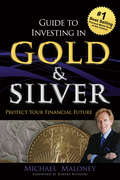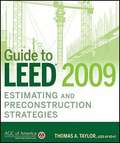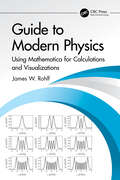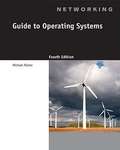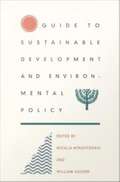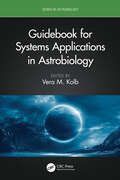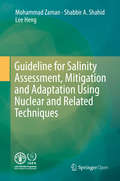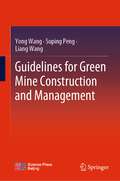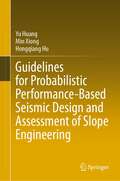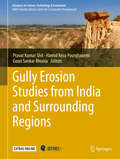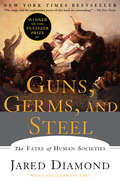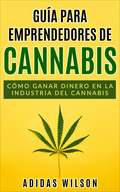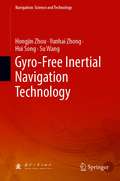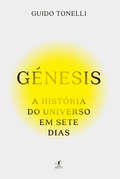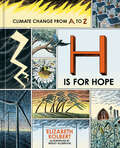- Table View
- List View
Guida alla Cannabis per Imprenditori: Come guadagnare nell'industria della cannabis
by Adidas WilsonL'industria della cannabis legale ha sperimentato, nel corso del suo primo anno, una crescita del 75%. Ma questo è solo l'inizio, Questo mercato si svilupperà ulteriormente quando saranno emanate, o semplicemente riformate, sempre più leggi in suo favore. Alcuni esperti prevedono che nei prossimi cinque anni l'intero settore possa arrivare a valere miliardi di dollari. Ma come si può guadagnare in maniera legale con la marijuana? Se si hanno ottime competenze, trovare un lavoro in questo mercato non dovrebbe essere difficile: potrebbe trattarsi di vendite, marketing, tecnologia, contabilità, design, in generale qualsiasi professionalità di cui le attività sulla marijuana potrebbero aver bisogno. Una forte richiesta di figure lavorative potrebbe generarsi anche nell'indotto. Il mercato della marijuana è generalmente regolamentato in maniera rigorosa, e questo crea, in realtà, molte opportunità.
Guide To Social Impact Assessment: A Framework For Assessing Social Change
by Kristi BranchDesigned to provide clear and detailed assistance in the complex process of assessing social change, this book emphasizes the development of an analytic approach and a theoretical framework that can be applied to the assessment of very diverse events--changes in the natural environment, the local economy, or the dominant technology. The guide, based on a sociological perspective that highlights the importance of community social organization in analyzing social change, focuses on the development of user skills in assessment design, research, analysis, and presentation. The guide's theoretical basis and emphasis on the interrelationships that create social change make it valuable to those studying social change in general, as well as to those responsible for conducting or utilizing social impact assessments. Detailed "how to" information, clear writing, and careful design impart the skills necessary to identify and analyze the factors and processes leading to social change and to interpret and present research findings in an effective manner.
Guide des entrepreneurs sur le cannabis: Comment gagner de l'argent dans l'industrie du cannabis
by Adidas WilsonL'industrie légale du cannabis a augmenté de 75% au cours de sa première année. Ce n'est que le début. Il continuera de croître à mesure que de nouvelles lois seront adoptées ou révisées en sa faveur. Certains experts prédisent que l'industrie pourrait valoir des milliards au cours des cinq prochaines années. Alors, comment pouvez-vous gagner légalement de l'argent avec de la marijuana? Si vous possédez un ensemble de compétences précieux, trouver un emploi dans l'industrie sera facile. Cela pourrait être les ventes, le marketing, la technologie, la comptabilité, la conception et essentiellement tout ce dont une entreprise du secteur de la marijuana pourrait avoir besoin. Il existe également une forte demande de postes auxiliaires. Le marché de la marijuana est strictement réglementé, ce qui crée de nombreuses opportunités.
Guide on Resource Revenue Transparency
by International Monetary FundA report from the International Monetary Fund.
Guide to Classical Physics: Using Mathematica for Calculations and Visualizations
by James W. RohlfThis is a “how to guide” for making introductory calculations in classical physics for undergraduates studying the subject.The calculations are performed in Mathematica, and stress graphical visualization, units, and numerical answers. The techniques show the student how to learn the physics without being hung up on the math. There is a continuing movement to introduce more advanced computational methods into lower-level physics courses. Mathematica is a unique tool in that code is written as "human readable" much like one writes a traditional equation on the board.The companion code for this book can be found here: https://physics.bu.edu/~rohlf/code.htmlKey Features:• Concise summary of the physics concepts• Over 300 worked examples in Mathematica• Tutorial to allow a beginner to produce fast resultsThe companion code for this book can be found here: https://physics.bu.edu/~rohlf/code.html
Guide to Electricity and Magnetism: Using Mathematica for Calculations and Visualizations
by James W. RohlfThis is a “how to guide” for a calculus-based introductory course in electricity and magnetism. Students taking the subject at an intermediate or advanced level may also find it to be a useful reference. The calculations are performed in Mathematica, and stress graphical visualization, units, and numerical answers. The techniques show the student how to learn the physics without being hung up on the math. There is a continuing movement to introduce more advanced computational methods into lower-level physics courses. Mathematica is a unique tool in that code is written as "human readable" much like one writes a traditional equation on the board.Key Features: Concise summary of the physics concepts. Over 300 worked examples in Mathematica. Tutorial to allow a beginner to produce fast results. The companion code for this book can be found here: https://physics.bu.edu/~rohlf/code.html
Guide to Investing in Gold & Silver
by Michael Maloney Foreword by Robert KiyosakiYou hold in your hands an updated version of the book that accurately predicted the global stock market crash of 2008, the bursting of the real estate bubble, and Ben Bernanke's unprecedented overreaction via 'Quantitative Easing' programs. First published in 2008, the book quickly became a best seller not just for its timely insight into precious metals investment - but for its amazingly accurate prediction of a 'Roller Coaster Crash'- the manipulated whipsaw between inflation, deflation and back again. In this latest update to his book, author Michael Maloney adds his thoughts on what has played out so far, what we may be facing soon, and how gold and silver can help you transform the coming economic storm into a once in a lifetime opportunity. Gold & Silver have served as the ultimate safe-haven from financial chaos throughout history, and today is no exception. All the underlying fundamentals that caused the financial meltdown of 2008 have not been solved, but have been magnified by the actions of the world's central banks. The, bailouts currency creation, market manipulation, derivatives expansion, and growth of the "too big to fail" banks only guarantee that the next crisis will make the crash of 2008 look like a speed-bump on the way to the main event. Never in history has the global economy stood at such a precipice, and never in history has it been more vital to understand how, why and where to invest in gold and silver. Book jacket.
Guide to LEED® 2009 Estimating and Preconstruction Strategies
by Thomas A. TaylorThis guide walks the reader step by step through the LEED 2009 for New Construction process, offering advanced techniques for estimating the actual costs, in time and money, for building green. It serves as an essential primer to price-assessment strategies for high-performance commercial and institutional projects, which include office buildings, high-rise residential buildings, government buildings, recreational facilities, manufacturing plants, and laboratories. Written by an author with more than twenty years of green construction experience on more than 80LEED registered or certified projects, the book provides real-world case studies used to demonstrate the techniques and concepts revealed in the book, covers project documentation, and provides strategies to help the reader understand the real costs and scheduling implications associated with sustainable building.
Guide to Modern Physics: Using Mathematica for Calculations and Visualizations
by James W. RohlfThis is a "how to guide" for making beginning calculations in modern physics. The academic level is second year college physical science and engineering students. The calculations are performed in Mathematica, and stress graphical visualization, units, and numerical answers. The techniques show the student how to learn the physics without being hung up on the math. There is a continuing movement to introduce more advanced computational methods into lower-level physics courses. Mathematica is a unique tool in that code is written as "human readable" much like one writes a traditional equation on the board. Key Features: Concise summary of the physics concepts. Over 300 worked examples in Mathematica. Tutorial to allow a beginner to produce fast results. The companion code for this book can be found here: https://physics.bu.edu/~rohlf/code.html James Rohlf is a Professor at Boston University. As a graduate student he worked on the first experiment to trigger on hadron jets with a calorimeter, Fermilab E260. His thesis (G. C. Fox, advisor, C. Barnes, R. P. Feynman, R. Gomez) used the model of Field and Feynman to compare observed jets from hadron collisions to that from electron-positron collisions and made detailed acceptance corrections to arrive at first the measurement of quark-quark scattering cross sections. His thesis is published in Nuclear Physics B171 (1980) 1. At the Cornell Electron Storage Rings, he worked on the discovery of the Upsilon (4S) resonance and using novel event shape variables developed by Stephen Wolfram and his thesis advisor, Geoffrey Fox. He performed particle identification of kaons and charmed mesons to establish the quark decay sequence, b –> c. At CERN, he worked on the discovery of the W and Z bosons and measurement of their properties. Presently, he is working on the Compact Muon Solenoid (CMS) experiment at the CERN Large Hadron Collider (LHC) which discovered the Higgs boson and is searching for new phenomena beyond the standard model.
Guide to Operating Systems (Fourth Edition)
by Michael Palmer Michael WaltersGet the latest theory and technical information for working on Windows, Mac OS, and UNIX/Linuxplatforms with GUIDE TO OPERATING SYSTEMS, 4E. Topics include operating system theory, installation, upgrading, configuring (operating system and hardware), file systems, security, hardware options, storage, resource sharing, network connectivity, maintenance, and troubleshooting. Designed to be easily understood and highly practical, GUIDE TO OPERATING SYSTEMS, 4E is the resource readers need for deepening their understanding of different operating systems. GUIDE TO OPERATING SYSTEMS, 4E prepares readers to understand the fundamental concepts of computer operating systems. The book specifically addresses Windows XP, Windows Vista, Windows 7, Windows Server 2003 and Windows Server 2003 R2, Windows Server 2008 and Windows Server 2008 R2, SUSE Linux, Fedora Linux, Red Hat Linux, and Mac OS X (Panther, Tiger, Leopard, and Snow Leopard), and provides information on all network operating subjects.
Guide to Sustainable Development and Environmental Policy
by Natalia Mirovitskaya William AscherThe Guide to Sustainable Development and Environmental Policy is a comprehensive presentation of definitions, philosophies, policies, models, and analyses of global environmental and developmental issues. With a wealth of comparative, multidisciplinary, and geographically varied perspectives on environmental governance, it also provides detailed and balanced discussions about specific environmental issues. The guide combines formal, objective entries with critical commentaries that emphasize different opinions and controversies. With succinct explanations of more than a thousand terms, thoughtful interpretations by international experts, and helpful cross-referencing, this resource is designed to serve as a roadmap for understanding the issues and debates in the overlapping fields of environment and development. Intended for use by activists, journalists, policymakers, students, scholars, and interested citizens, the Guide to Sustainable Development and Environmental Policy will be a helpful tool for anyone trying to get a comprehensive look at the many environmental organizations, schools of thought, development programs, international environmental treaties, conventions, and strategies that have proliferated in the past few decades.
Guide to the Geology of Mount Desert Island and Acadia National Park
by Sarah Hall Duane Braun Ruth BraunThis richly-illustrated, full-color guide to the geology of Mount Desert Island, Maine, the home of Acadia National Park, makes the spectacular scenery and rich geological history accessible to outdoor explorers, geology enthusiasts, and armchair travelers alike. The Guide grounds readers in basic geologic concepts before chronicling the unique history of the area from 550 million years ago to the present. Including information-packed self-guided trips with stops at 31 points of interest, this book is lavishly illustrated with 100 full color photos, maps, and illustrations that enhance appreciation of this national treasure.Duane and Ruth Braun relate the fascinating story of the region's formation, explaining how a slice of South America with Mount Desert Island bordering its southern side landed on the edge of North America to form Maine. Another piece of South America collided with this landing, causing Mount Desert Island to erupt violently in a ten mile wide volcanic caldera. The Island then underwent a long period of stream erosion culminating in a period of glacial erosion to form the present landscape. The exceptional scenery that resulted has attracted visitors from around the world. This book unlocks the many secrets of the formations, offering a deeper understanding of the land and its origins.
Guidebook for Systems Applications in Astrobiology (Series in Astrobiology)
by Vera M. KolbThis book addresses the timely subject of systems applications in astrobiology. It demonstrates how astrobiology – a multidisciplinary, interdisciplinary, and transdisciplinary field of science – can benefit from adopting the systems approach. Astrobiology draws upon its founding sciences, such as astronomy, physics, chemistry, biochemistry, geology, and planetary sciences. However, astrobiologists can encounter difficulties working across these fields. The systems approach, we believe, is the best contemporary approach to consider astrobiology holistically. The approach is currently used in other fields, such as engineering, which uses systems analysis routinely. Such an approach needs to be learned, both in principle and through examples, from the field. This book features chapters from experts across the field of astrobiology who have applied the systems approach. It will be a valuable guide for astrobiology students at the advanced undergraduate and graduate levels, in addition to researchers in the field, both in academia and the space industry. Key Features: Offers a unique and novel approach to studying and understanding astrobiology Encourages astrobiologists to apply a holistic systems approach to their work, rather than being bogged down in details Imparts practical knowledge to readers which can be adopted in different research and job opportunities in the field of astrobiology Vera M. Kolb obtained degrees in chemical engineering and organic chemistry from Belgrade University, Serbia, and earned her PhD in organic chemistry from Southern Illinois University, Carbondale, Illinois, United States. Following a 30-year career, she is Professor Emerita of Chemistry at the University of Wisconsin-Parkside, Kenosha, Wisconsin. During her first sabbatical leave with the NASA Specialized Center of Research and Training (NSCORT) in Astrobiology, she conducted research with Dr. Leslie Orgel at the Salk Institute and Prof. Stanley Miller at UC San Diego. Her second sabbatical was with Prof. Joseph Lambert at Northwestern University, where she studied sugar silicates and their potential astrobiological relevance. She is credited for authoring over 160 publications, in the fields of organic and medicinal chemistry, green chemistry, and astrobiology, including several books. Recently, she authored Green Organic Chemistry and Its Interdisciplinary Applications (CRC 2016). In the astrobiology field, she edited Astrobiology: An Evolutionary Approach (CRC 2015) and Handbook of Astrobiology (CRC 2019). She co-authored (with Benton C. Clark) Astrobiology for a General Reader: A Questions and Answers Approach (CSP 2020) and Systems Approach to Astrobiology (CRC 2023).
Guideline for Salinity Assessment, Mitigation and Adaptation Using Nuclear and Related Techniques
by Shabbir A. Shahid Lee Heng Mohammad ZamanThis open access book is an outcome of the collaboration between the Soil and Water Management & Crop Nutrition Section, Joint FAO/IAEA Division of Nuclear Techniques in Food and Agriculture, Department of Nuclear Sciences and Applications, International Atomic Energy Agency (IAEA), Vienna, Austria, and Dr. Shabbir A Shahid, Senior Salinity Management Expert, Freelancer based in United Arab Emirates.The objective of this book is to develop protocols for salinity and sodicity assessment and develop mitigation and adaptation measures to use saline and sodic soils sustainably. The focus is on important issues related to salinity and sodicity and to describe these in an easy and user friendly way. The information has been compiled from the latest published literature and from the authors’ publications specific to the subject matter. The book consists of six chapters. Chapter 1 introduces the terms salinity and sodicity and describes various salinity classification systems commonly used around the world. Chapter 2 reviews global distribution of salinization and socioeconomic aspects related to salinity and crop production. Chapters 3 covers comprehensively salinity and sodicity adaptation and mitigation options including physical, chemical, hydrological and biological methods. Chapter 4 discusses the efforts that have been made to demonstrate the development of soil salinity zones under different irrigation systems. Chapter 5 discusses the quality of irrigation water, boron toxicity and relative tolerance to boron, the effects of chlorides on crops. Chapter 6 introduces the role of nuclear techniques in saline agriculture.
Guidelines for Analysis and Description of Soil and Regolith Thin Sections (ASA, CSSA, and SSSA Books #184)
by Georges StoopsA revised guide to the study and of soil and regolith thin sections A specialized system of terms and concepts must be used to accurately and effectively distinguish and name the microscopic features of soils and regoliths. With a comprehensive, consistent terminology at their disposal, researchers may compare, store and discuss new data easily and with less risk of error. The second edition of Guidelines for Analysis and Description of Soil and Regolith Thin Sections has been assembled to address this need, offering a practical system of analysis and description to those working with soil and regolith materials. This essential resource includes: An introduction to micromorphology and its practice Guidelines for the study of thin sections Sections covering the various microscopic features of soils and regoliths Illustrative graphics and colour micrographs Suggested description schemes and data presentation tips By providing an economical, navigable system for the study and documentation of soils and regoliths, Guidelines for Analysis and Description of Soil and Regolith Thin Sections, second edition, offers invaluable guidance for soil scientists, geologists, ecologists, archaeologists and all those concerned with micromorphology.
Guidelines for Green Mine Construction and Management
by Liang Wang Yong Wang Suping PengThis book comprehensively covers many aspects of green mine, including the basic situation of green mines, mine facilities, extraction management, ecological environment, scientific and technological innovation, standardized management, environmental protection inspectors, and special tools in response to the needs of green mine construction, assessment, and management. It is highly informative with valuable techniques and tools providing insights both for scholars and practitioners working in green mine field.
Guidelines for Probabilistic Performance-Based Seismic Design and Assessment of Slope Engineering
by Yu Huang Min Xiong Hongqiang HuThis book provides a new design and evaluation framework based on slope Stochastic Dynamics theory to probabilistic seismic performance for slope engineering. For the seismic dynamic stability safety of slope, it shifts from deterministic seismic dynamic analysis to quantitative analysis based on nonlinear stochastic dynamics, that is, from qualitative to the description of stochasticity of earthquake excitation that meet the needs in related design specification and establish a performance standard. In the nonlinear dynamic time history analysis of slope subjected to seismic ground motion, the term “randomness” is used to express the uncertainty in the intensity and frequency of earthquake excitation for slope engineering dynamic seismic performance. It mainly includes seismic design fortification standard, corresponding ground motion excitation, performance index threshold, and slope deterministic nonlinear seismic dynamic response. Even more than that, the seismic dynamic large deformation approaches of the whole process and comprehensive analysis for flow analysis after slope instability failure. Eventually, the probabilistic seismic dynamic performance of the slope engineering will be characterized by nonlinear dynamic reliability.
Gulf Conference on Sustainable Built Environment
by Ali Bumajdad Walid Bouhamra Osamah A. Alsayegh Hasan A. Kamal Salem Falah AlhajrafThis volume brings together outstanding contributions to the Gulf Conference on Sustainable Built Environment, held at the Marina Hotel Kuwait, near Kuwait City. The Proceedings collects 29 papers on a range of engineering and materials challenges, and best practices, addressing development of new sustainable building materials, performance improvement of structures and tall buildings, developing monitoring and analysis techniques and frameworks for existing infrastructure under environmental effects, development of long-term sustainability plans for building stock, and development of energy efficient buildings in the gulf region. The Conference was organized by the Kuwait Foundation for the Advancement of Sciences (KFAS), the Massachusetts Institute of Technology, the Kuwait Institute for Scientific Research, and Kuwait University.
Gully Erosion Studies from India and Surrounding Regions (Advances in Science, Technology & Innovation)
by Hamid Reza Pourghasemi Gouri Sankar Bhunia Pravat Kumar ShitThis book offers the scientific basis for the ample evaluation of badland management in India and some surrounding regions. It examines the processes operating in the headwaters and main channels of ephemeral rivers in lateritic environments of India. In particular, the book covers a range of vital topics in the areas of gully erosion and water to soil erosion at lateritic uplands regions of India and other regions in Asia. It explores the probable gully erosion modeling through Remote Sensing & GIS Techniques. It is divided into three units. Unit I deals with the introduction of badland, types of badland and the process of badland formation. Unit II is devoted to a description of quantitative measurements. Unit III deals with the control and management processes related to various issues from different regions. As such this book serves as a reference book for research activities in this area. It is an efficient guide for aspiring researchers in applied geography, explaining advanced techniques to help students recognize both simple and complex concepts.
Gunflint Falling: Blowdown in the Boundary Waters
by Cary J. GriffithStories from survivors of the Boundary Waters Canoe Area Wilderness&’s epochal weather disaster On July 4, 1999, in the Boundary Waters Canoe Area Wilderness (BWCAW), a bizarre confluence of meteorological events resulted in the most damaging blowdown in the region&’s history. Originating over the Dakotas, the midsummer windstorm developed amid unusually high heat and water-saturated forests and moved steadily east, bearing down on Fargo, North Dakota, and damaging land as it crossed the Minnesota border. Gunflint Falling tells the story of this devastating storm from the perspectives of those who were on the ground before, during, and after the catastrophic event—from first-time visitors to the north woods to returning paddlers to Forest Service Rangers. The pre-dawn forecasts from the National Weather Service in Duluth for that Sunday of the holiday weekend predicted the day would be &“warm and humid. Partly sunny with a thirty percent chance of thunderstorms.&” But as the afternoon and evening settled over the Boundary Waters, the first eyewitness accounts began to tell a dramatic and terrifying story. Five friends camping on Lake Polly watched in wonder as the sky turned green and the winds began to whip. They scrambled to pull canoes on shore and secure tarps when a tree snapped and struck one of them in the head, rendering her unconscious. Three women enjoying their last day of a camping trip near the end of the Gunflint Trail took shelter in their tent as winds increased. Water drenched the nylon walls as trees crashed around them, one flattening the tent and pinning a woman beneath its weight. A family vacationing at their cabin dodged falling trees and strained against straight-line winds as they sprinted from the cabin to the safest place they knew: a crawl space underneath it. They watched in awe as trees snapped and toppled, their twisted root balls torn out of the water-logged earth—as they prayed their cabin would hold. By the time the storm began to subside, falling trees had injured approximately sixty people, and most needed to be medevacked to safety. Amazingly, no one died. The historic storm laid down timber that would later blaze in the Ham Lake fire of 2007, ultimately reshaping the region&’s forests in ways we have yet to fully understand.
Guns, Germs, and Steel: The Fates of Human Societies
by Jared Diamond"Fascinating.... Lays a foundation for understanding human history."—Bill Gates In this "artful, informative, and delightful" (William H. McNeill, New York Review of Books) book, Jared Diamond convincingly argues that geographical and environmental factors shaped the modern world. Societies that had had a head start in food production advanced beyond the hunter-gatherer stage, and then developed religion --as well as nasty germs and potent weapons of war --and adventured on sea and land to conquer and decimate preliterate cultures. A major advance in our understanding of human societies, Guns, Germs, and Steel chronicles the way that the modern world came to be and stunningly dismantles racially based theories of human history. Winner of the Pulitzer Prize, the Phi Beta Kappa Award in Science, the Rhone-Poulenc Prize, and the Commonwealth club of California's Gold Medal.
Guía para emprendedores de cannabis: Cómo ganar dinero en la industria del cannabis
by Adidas WilsonLa industria legal del cannabis ha crecido un 75% en su primer año. Este es solo el comienzo. Continuará creciendo a medida que se hagan o revisen más leyes a su favor. Algunos expertos predicen que la industria podría valer miles de millones en los próximos cinco años. Entonces, ¿cómo puedes ganar dinero legalmente con la marihuana? Si cuentas con un conjunto de habilidades valiosas, será fácil encontrar trabajo en la industria. Este podría ser ventas, marketing, tecnología, contabilidad, diseño y, básicamente, cualquier otra cosa que pueda necesitar una empresa del sector de la marihuana. También existe una gran demanda de puestos auxiliares. El mercado de la marihuana se encuentra estrictamente regulado, y esto crea muchas oportunidades.
Gyro-Free Inertial Navigation Technology (Navigation: Science and Technology #7)
by Hui Song Hongjin Zhou Yunhai Zhong Su WangThis book focuses on gyro-free inertial navigation technology, which is used to measure not only linear motion parameters but also angular rates. Since no gyroscopes are used, the key technologies, such as initial alignment, attitude resolution, and error calibration, are very different than those used in traditional methods.Discussing each key technology in gyro-free inertial navigation system (GFINS) manufacture in a separate chapter, the book features easy-to-understand, detailed illustrations, to allow all those involved in inertial navigation to gain a better grasp of GFINS manufacture, including accelerometer setting principles; initial alignment; quaternion-based, attitude resolution algorithms; and accelerometer de-noise methods.
Génesis: The Story Of How Everything Began
by Guido TonelliTudo nasce de uma simples e inevitável pergunta: «De onde vem tudo isto?» Um ensaio admirável sobre o início de tudo que devolve à Humanidade a verdadeira história das suas origens. No princípio, era o caos. Talvez os gregos tivessem razão, já que muitas observações da física moderna parecem confirmá-lo. Mas o que aconteceu realmente nos primeiros instantes da vida do universo? Do caos descrito por Hesíodo ao bosão de Higgs, Guido Tonelli, renomado físico do CERN e professor na universidade de Pisa, emula a estrutura narrativa bíblica da criação do mundo em sete dias para relatar, em sete capítulos e assinalável fascínio, a estranha singularidade que permitiu a formação do universo e a sopa primordial de onde surgiu a Vida. Com inesperada simplicidade e incontestável poesia, Tonelli segue o fio condutor da consciência para responder à sempiterna pergunta: De onde vem tudo isto? A narração de como tudo começou, da formação das partículas, da matéria, das estrelas, dos humanos e do seu pensamento simbólico, de tudo quanto existe, portanto, é acompanhada pela recuperação dos mitos ancestrais criados e transmitidos de geração em geração em torno da origem do universo, bem como do relato de histórias fascinantes de cientistas que dedicaram a vida à investigação do enigma da origem, de Galileu a Stephen Hawking, com os seus momentos Eureka! e as histórias anedócticas que entraram para a história da ciência e do mundo. «Nós, os cientistas, somos como os homens na caverna de Platão: tentamos libertar-nos dos grilhões - conclusões erradas -, tentamos dar um nome às sombras, tentamos sair da caverna para ver a luz.» Guido Tonelli
H Is for Hope: Climate Change from A to Z
by Elizabeth KolbertIn twenty-six essays—one for each letter of the alphabet—the Pulitzer Prize-winning author of The Sixth Extinction takes us on a hauntingly illustrated journey through the history of climate change and the uncertainties of our future.Climate change resists narrative—and yet some account of what&’s happening is needed. Millions of lives are at stake, and upward of a million species. And there are decisions to be made, even though it&’s unclear who, exactly, will make them.In H Is for Hope, Elizabeth Kolbert investigates the landscape of climate change—from &“A&”, for Svante Arrhenius, who created the world&’s first climate model in 1894, to &“Z&”, for the Colorado River Basin, ground zero for climate change in the United States. Along the way she looks at Greta Thunburg&’s &“blah blah blah&” speech (&“B&”), learns to fly an all-electric plane (&“E&”), experiments with the effects of extreme temperatures on the human body (&“T&”), and struggles with the deep uncertainty of the future of climate change (&“U&”).Adapted from essays originally published in The New Yorker and beautifully illustrated by Wesley Allsbrook, H Is for Hope is simultaneously inspiring, alarming, and darkly humorous—a unique examination of our changing world.
